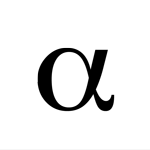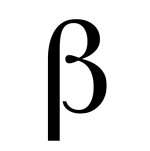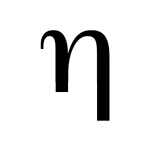 aesthetics,
aesthetics,  backgrounds,
backgrounds,  icons,
icons,  images,
images,  lyrics,
lyrics,  presentation,
presentation,  software,
software,  video,
video,  visual,
visual,  worship,
worship,  worship leader in
worship leader in  Computers,
Computers,  Creative,
Creative,  Music,
Music,  Nature,
Nature,  Resources,
Resources,  Sunday Services,
Sunday Services,  Technology,
Technology,  Visual,
Visual,  Worship
Worship
|
|
 Monday, November 21, 2011 at 7:03PM
Monday, November 21, 2011 at 7:03PM  That said, below are some points I have noted in my brain over the last several years, related to video presentation of lyrics during worship. These come in the light of an overwhelming push in modern worship settings to video presented lyrics with motion backgrounds, themed images and eye-catching marriages of lyric, music and imagery. These may stand in contexts which find themselves lost for sensibility in video lyric display. They may seem redundant to folks who already stress long and hard about making worship environments as un-distracting as possible. My primary goal with these points is just that- to remove the distraction that has become more commonplace with the use (and sometimes misuse) of video lyric presentation and backgrounds.
That said, below are some points I have noted in my brain over the last several years, related to video presentation of lyrics during worship. These come in the light of an overwhelming push in modern worship settings to video presented lyrics with motion backgrounds, themed images and eye-catching marriages of lyric, music and imagery. These may stand in contexts which find themselves lost for sensibility in video lyric display. They may seem redundant to folks who already stress long and hard about making worship environments as un-distracting as possible. My primary goal with these points is just that- to remove the distraction that has become more commonplace with the use (and sometimes misuse) of video lyric presentation and backgrounds. Use one background! Please consider utilizing the same image background for an entire worship set, Sunday or even a series of meetings. Choose a background that is subdued enough to present texture but not to draw attention too strongly away from the lyrics. Then make sure your chosen background works across a range of songs that you will use. Nothing can be more distracting that being jarred from one furious song background imagery into another. Creating a place of visual “safety” on the lyric presentation might be as simple as using the same background for an entire set. Using different backgrounds for each song or even segment of a song can become so distracting that people will reject looking at the video screen in hopes that they can worship by not being distracted by it- which all seems like the wrong thing to be happening if we are using visuals to help people in worship.
Use one background! Please consider utilizing the same image background for an entire worship set, Sunday or even a series of meetings. Choose a background that is subdued enough to present texture but not to draw attention too strongly away from the lyrics. Then make sure your chosen background works across a range of songs that you will use. Nothing can be more distracting that being jarred from one furious song background imagery into another. Creating a place of visual “safety” on the lyric presentation might be as simple as using the same background for an entire set. Using different backgrounds for each song or even segment of a song can become so distracting that people will reject looking at the video screen in hopes that they can worship by not being distracted by it- which all seems like the wrong thing to be happening if we are using visuals to help people in worship. Try using a maximum of three or four (3-4) lyric lines per screen. Using entire songs, stanzas or sections that are more than 3-4 lines on a single screen can make the words small and unreadable. Using visual presentation technology should help people visually, not make it more difficult. Try to keep the fonts large and help everyone see the lyrics. The important thing to remember is that the lyrics are primary here, not the imagery or thematic nuances of the service. Ask yourself if the text is readable for everyone. Both font size and font type are important factors. Proper size will make the text readable. Proper font type will make it understandable. This is not the place to choose a fancy or artistic font. Stay well within common font types.
Try using a maximum of three or four (3-4) lyric lines per screen. Using entire songs, stanzas or sections that are more than 3-4 lines on a single screen can make the words small and unreadable. Using visual presentation technology should help people visually, not make it more difficult. Try to keep the fonts large and help everyone see the lyrics. The important thing to remember is that the lyrics are primary here, not the imagery or thematic nuances of the service. Ask yourself if the text is readable for everyone. Both font size and font type are important factors. Proper size will make the text readable. Proper font type will make it understandable. This is not the place to choose a fancy or artistic font. Stay well within common font types. When it comes to color- Less is more! Try muted colors. Try fewer colors or shades of grey in background image/motion selections. Often black and white imagery is more profound and less intrusive than colored images. The rainbows and kaleidoscopic graphs may be all the rage in your fractal geometry class, but Sunday morning is probably not the place to force people to stand gaping at visions of psychedelic majesty. This is all in balance, and don't avoid color where it is perfect and well used in a themed approach. But remember- lyrics are king, not images or color. If your lyrics are served well with your use of color, you're on the right track.
When it comes to color- Less is more! Try muted colors. Try fewer colors or shades of grey in background image/motion selections. Often black and white imagery is more profound and less intrusive than colored images. The rainbows and kaleidoscopic graphs may be all the rage in your fractal geometry class, but Sunday morning is probably not the place to force people to stand gaping at visions of psychedelic majesty. This is all in balance, and don't avoid color where it is perfect and well used in a themed approach. But remember- lyrics are king, not images or color. If your lyrics are served well with your use of color, you're on the right track. Less complete “storyline” movie loops- use more slow organic motion or even stills. It used to be inspiring to see the occasional background motion that followed the storyline of the lyrics. But after a thousand waterfalls, mountain scenes, and corny images of blue-screened people bowing at the edge digital ocean shores, we just might be at the end of needing to tell the story of the lyrics so literally with video. The important thing to remember here is that I am speaking to local churches, not conference settings and special events. On an occasional basis, engaging lyrical displays with motions and storylines can inspire, no doubt. But on a weekly basis, this becomes distracting, and ultimately takes the focus from the lyrics, which diminishes the message they contain. Subtlety is essential, humility is grace, less is more.
Less complete “storyline” movie loops- use more slow organic motion or even stills. It used to be inspiring to see the occasional background motion that followed the storyline of the lyrics. But after a thousand waterfalls, mountain scenes, and corny images of blue-screened people bowing at the edge digital ocean shores, we just might be at the end of needing to tell the story of the lyrics so literally with video. The important thing to remember here is that I am speaking to local churches, not conference settings and special events. On an occasional basis, engaging lyrical displays with motions and storylines can inspire, no doubt. But on a weekly basis, this becomes distracting, and ultimately takes the focus from the lyrics, which diminishes the message they contain. Subtlety is essential, humility is grace, less is more. Use icons well. I am the last one to suggest we use another tired image of a church steeple with clouds wafting above to backdrop a song lyric. But the excellent and proper use of icons continues to draw together good art, ideas, and tradition in our Christian communities. We’ve all seen the tired backgrounds done with the equivalent of clip-art- those are out. But the powerful, fresh images of ancient icons such as crosses, candles, texts, sculptures, ancient paintings, architecture, stained glass and Eucharist elements still bring thousands of years of faith to bear in our present contexts. This is where great art can shine, but we must use it well and with elegance.
Use icons well. I am the last one to suggest we use another tired image of a church steeple with clouds wafting above to backdrop a song lyric. But the excellent and proper use of icons continues to draw together good art, ideas, and tradition in our Christian communities. We’ve all seen the tired backgrounds done with the equivalent of clip-art- those are out. But the powerful, fresh images of ancient icons such as crosses, candles, texts, sculptures, ancient paintings, architecture, stained glass and Eucharist elements still bring thousands of years of faith to bear in our present contexts. This is where great art can shine, but we must use it well and with elegance. God’s icons - human images. After talking about icons, we can hardly ignore the icon God chose- human beings. A brief understanding of “the imago dei” brings us to the realization that no Biblical writer (or historical Christian leader of prominence) ignored the fact that God deals with us both in His story, and in ours. We are his image on earth. As we tell the story of His goodness and glory, our humanity is profoundly (and graciously) included, impacted as we are. All that to say- use more human images (especially black and whites stills) in our visual imagery for backgrounds. This is as authentic at describing the glory of God as images of nature and pictures. Using pictures of brokenness and grace, as seen in human lives, touches our songs in a powerful balance to other images. This is often missed.
God’s icons - human images. After talking about icons, we can hardly ignore the icon God chose- human beings. A brief understanding of “the imago dei” brings us to the realization that no Biblical writer (or historical Christian leader of prominence) ignored the fact that God deals with us both in His story, and in ours. We are his image on earth. As we tell the story of His goodness and glory, our humanity is profoundly (and graciously) included, impacted as we are. All that to say- use more human images (especially black and whites stills) in our visual imagery for backgrounds. This is as authentic at describing the glory of God as images of nature and pictures. Using pictures of brokenness and grace, as seen in human lives, touches our songs in a powerful balance to other images. This is often missed. Sans background. Strip all the extras away. Leave just the lyric. Let it speak undistracted, and unaided. This is never a wrong way to do lyrics. Once in a while, just try this and see how refreshing it is, especially in situations where video presentation has become extensively artful. I have seen some of the most profound uses of video that are simply a nice, artful font in white, contrasted to a black background. Sounds simple. It is. And powerful.
Sans background. Strip all the extras away. Leave just the lyric. Let it speak undistracted, and unaided. This is never a wrong way to do lyrics. Once in a while, just try this and see how refreshing it is, especially in situations where video presentation has become extensively artful. I have seen some of the most profound uses of video that are simply a nice, artful font in white, contrasted to a black background. Sounds simple. It is. And powerful. Sans everything! Woah. OK, so this is the 8th suggestion, but it is so revolutionary that it can't really be included in the "suggestions for lyric video presentation" list. What am I saying? Just this- shut off the lyric screen for a song. Do you really need to play the lyrics for "How Great Is Our God"? Really? Turn it off and let the congregation be free from the slavish devotion to a video screen and let them stand, sit, kneel, bow and honor their Creator without the "digital script" of the video calling them back to follow the dancing ball (please don't tell me anyone out there has a dancing ball on their lyrics). Seriously, folks, shut off the video presentation screen on occasion, and let people worship in song without the lyrics. It is surprisingly freeing.
Sans everything! Woah. OK, so this is the 8th suggestion, but it is so revolutionary that it can't really be included in the "suggestions for lyric video presentation" list. What am I saying? Just this- shut off the lyric screen for a song. Do you really need to play the lyrics for "How Great Is Our God"? Really? Turn it off and let the congregation be free from the slavish devotion to a video screen and let them stand, sit, kneel, bow and honor their Creator without the "digital script" of the video calling them back to follow the dancing ball (please don't tell me anyone out there has a dancing ball on their lyrics). Seriously, folks, shut off the video presentation screen on occasion, and let people worship in song without the lyrics. It is surprisingly freeing.
I hope these suggestions for video lyric display are helpful as you consider good aesthetics in your own cultural/community contexts. My suggestions may not reflect your own situation, so don't feel tied to them. But perhaps they will work for some who find themselves caught in tired loops or lost in a maze of distracting "artistic" digital overload.
Sincerely
Kim Gentes
 Kim Gentes
Kim Gentes
After years more of time experiencing lyric presentation within these guidelines, I felt it was worth one small adjustment at this point- try to make stanzas that are 4 reasonable lines or less of text fit on a single slide. Don't force it, but if it keeps the lyrics large enough to view from everywhere in your church, then it's a nice benefit to logically group a stanza that is not too long (IE. 4 lines or less) on a single slide.
 aesthetics,
aesthetics,  backgrounds,
backgrounds,  icons,
icons,  images,
images,  lyrics,
lyrics,  presentation,
presentation,  software,
software,  video,
video,  visual,
visual,  worship,
worship,  worship leader in
worship leader in  Computers,
Computers,  Creative,
Creative,  Music,
Music,  Nature,
Nature,  Resources,
Resources,  Sunday Services,
Sunday Services,  Technology,
Technology,  Visual,
Visual,  Worship
Worship